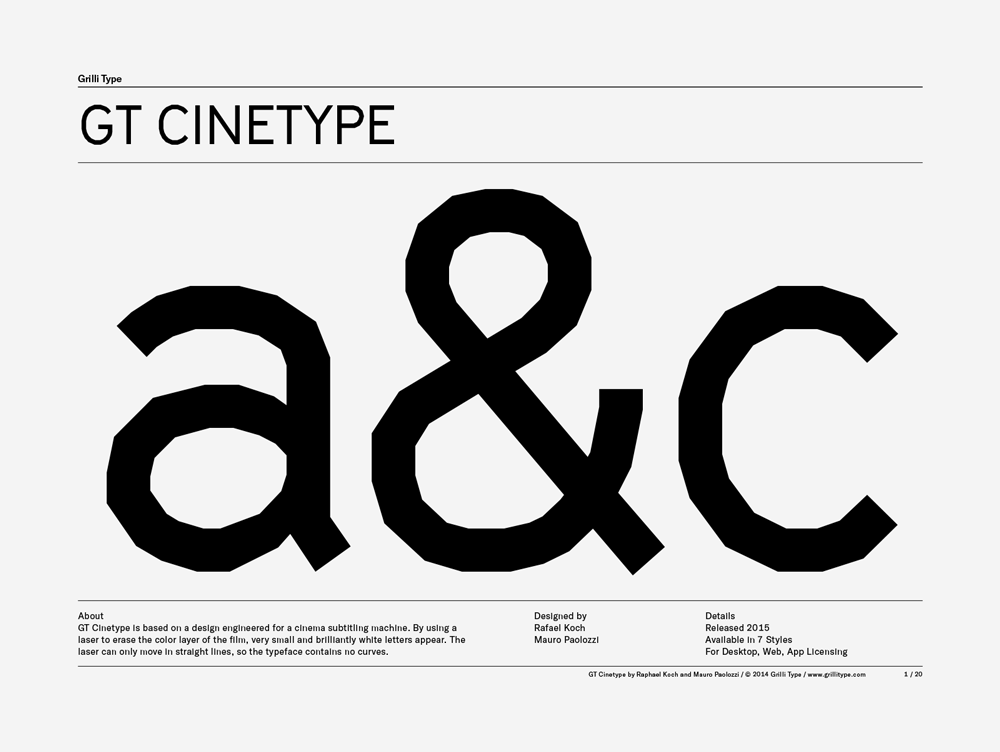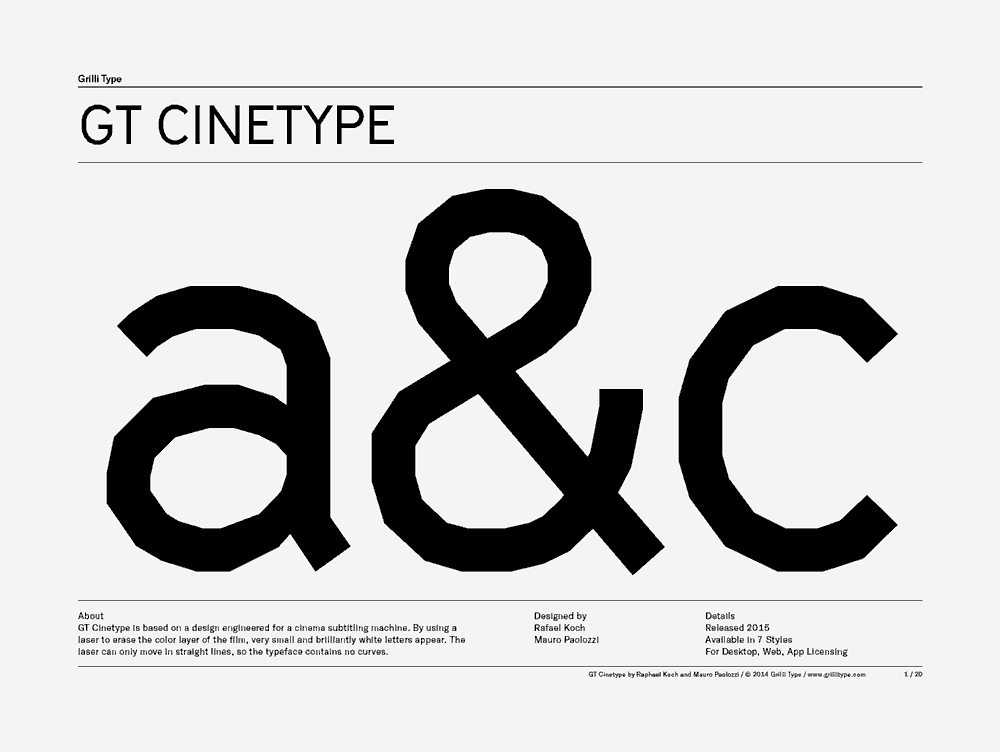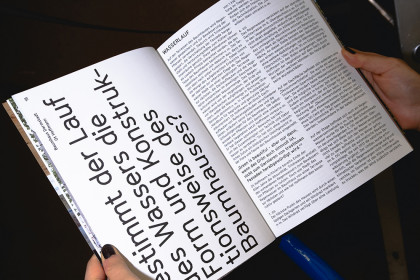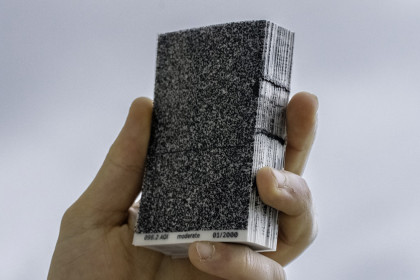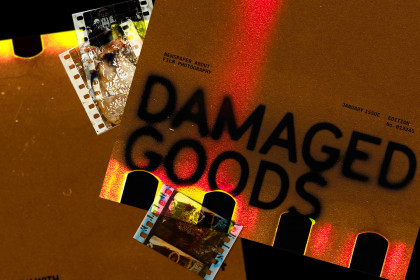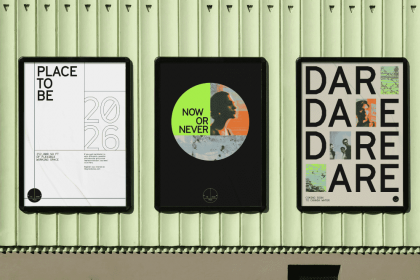GT Cinetype
Family overview
- Light Italic
- Regular Italic
- Bold Italic
- Mono
- LightNight of the Living Dead 1968 by George A. Romero with Duane Jones, Judith O’Dea, Karl Hardman
- Light ItalicChinatown 1974 by Roman Polanski with Jack Nicholson, Faye Dunaway, John Huston
- RegularThe Toxic Avenger 1984 by Michael Herz & Lloyd Kaufman with Andree Maranda, Mitch Cohen, Jennifer Babtist
- Regular ItalicKarate Kid 1984 by John G. Avildsen with Ralph Macchio, Pat Morita, Elisabeth Shue
- BoldYôjinbô 1961 by Akira Kurosawa with Toshirô Mifune, Eijirô Tôno, Tatsuya Nakadai
- Bold ItalicApocalypse Now 1979 by Francis Ford Coppola with Martin Sheen, Marlon Brando, Robert Duvall
- MonoPoltergeist 1982 by Steven Spielberg with JoBeth Williams, Heather O’Rourke, Craig T. Nelson
- Settings
Typeface information
GT Cinetype is based on a design engineered for a cinema subtitling machine. By using a laser to erase the color layer of the film, very small and brilliantly white letters appear. The laser can only move in straight lines, so the typeface contains no curves.
Typeface features
OpenType features enable smart typography. You can use these features in most Desktop applications, on the web, and in your mobile apps. Each typeface contains different features. Below are the most important features included in GT Cinetype’s fonts:
- CASE
- Case sensitive forms
(ROBOCOP)
- ONUM
- Oldstyle figures
10.03.1985
Typeface Minisite
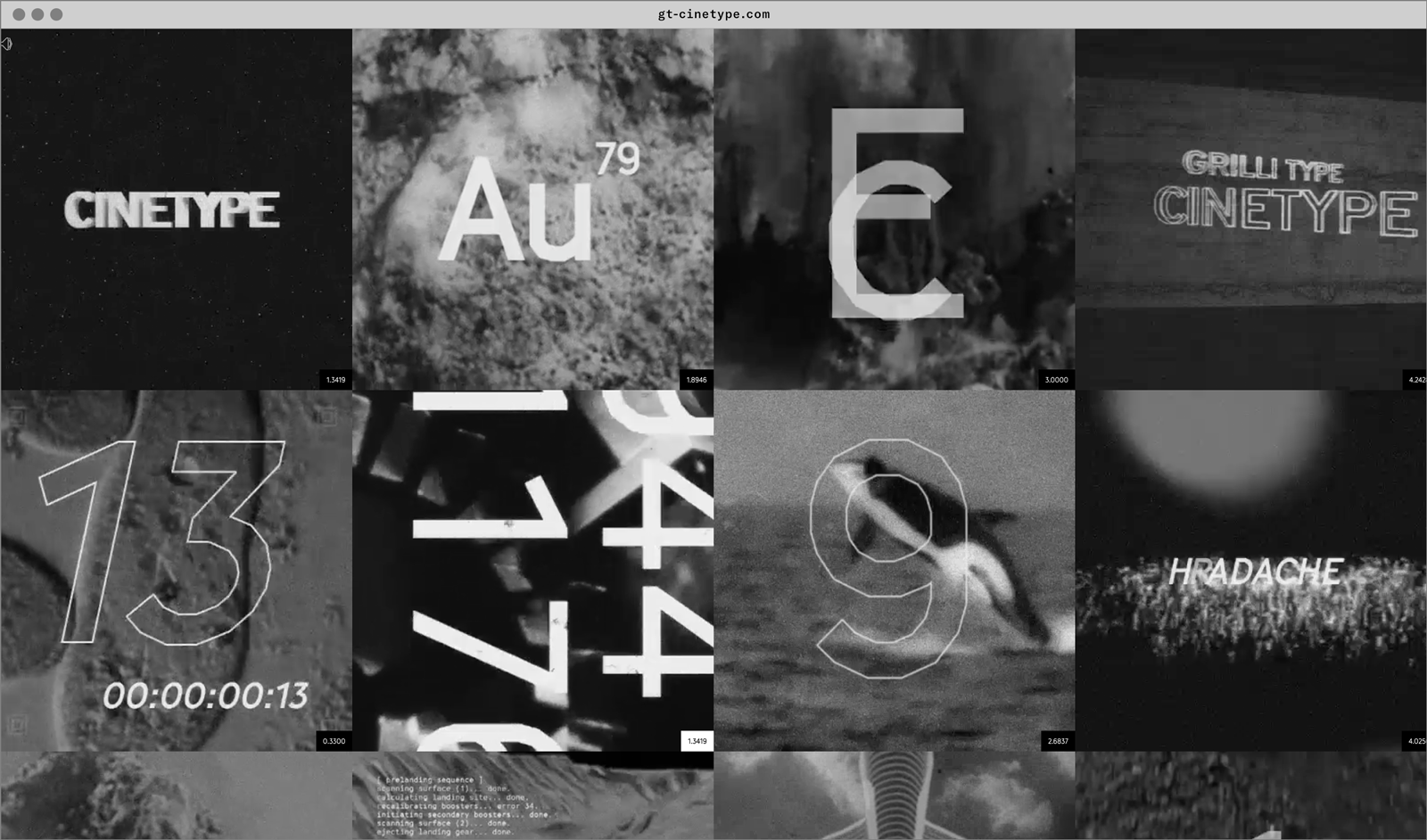
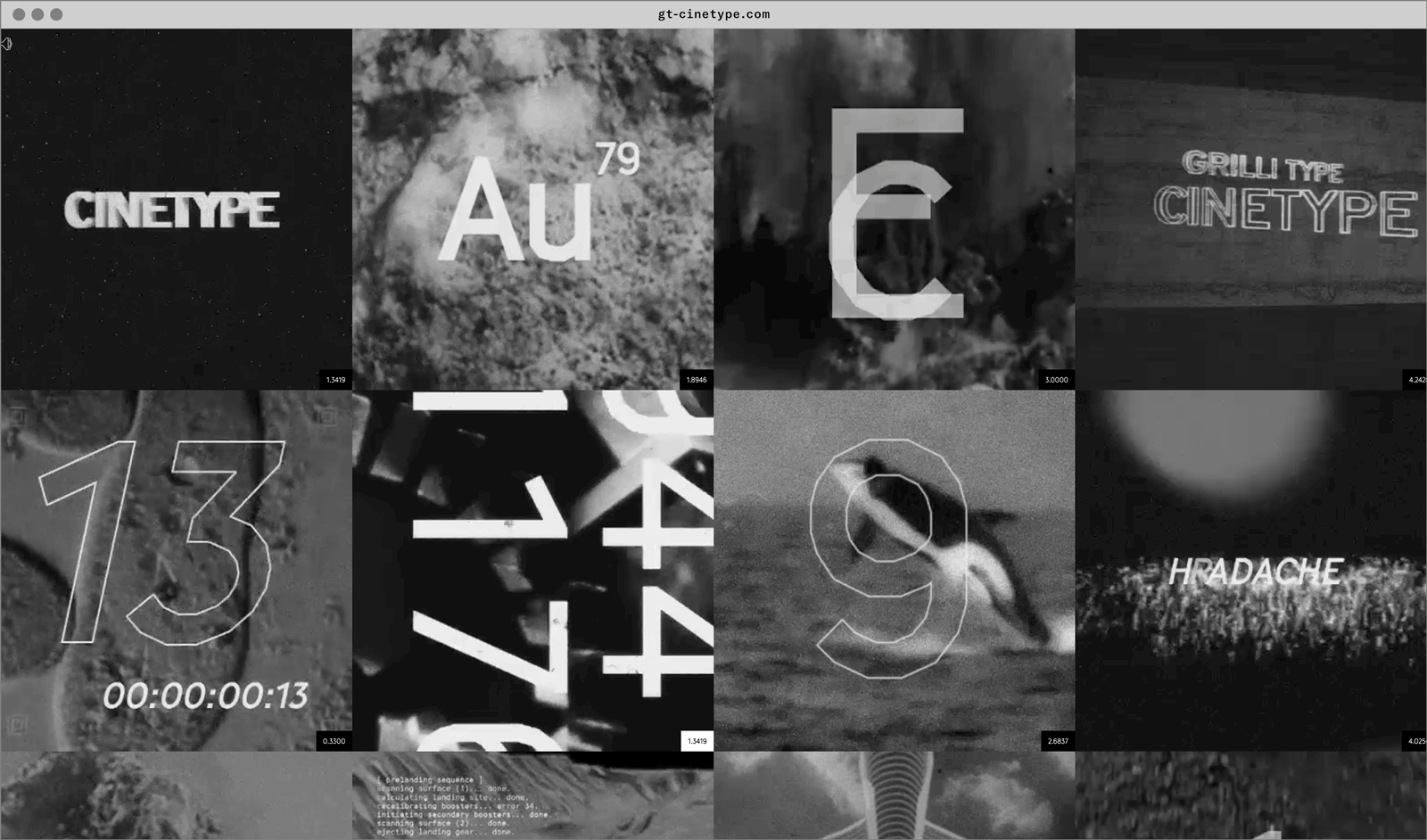
- Visit the GT Cinetype minisite to discover more about the typeface family’s history and design concept.
GT Cinetype in use
